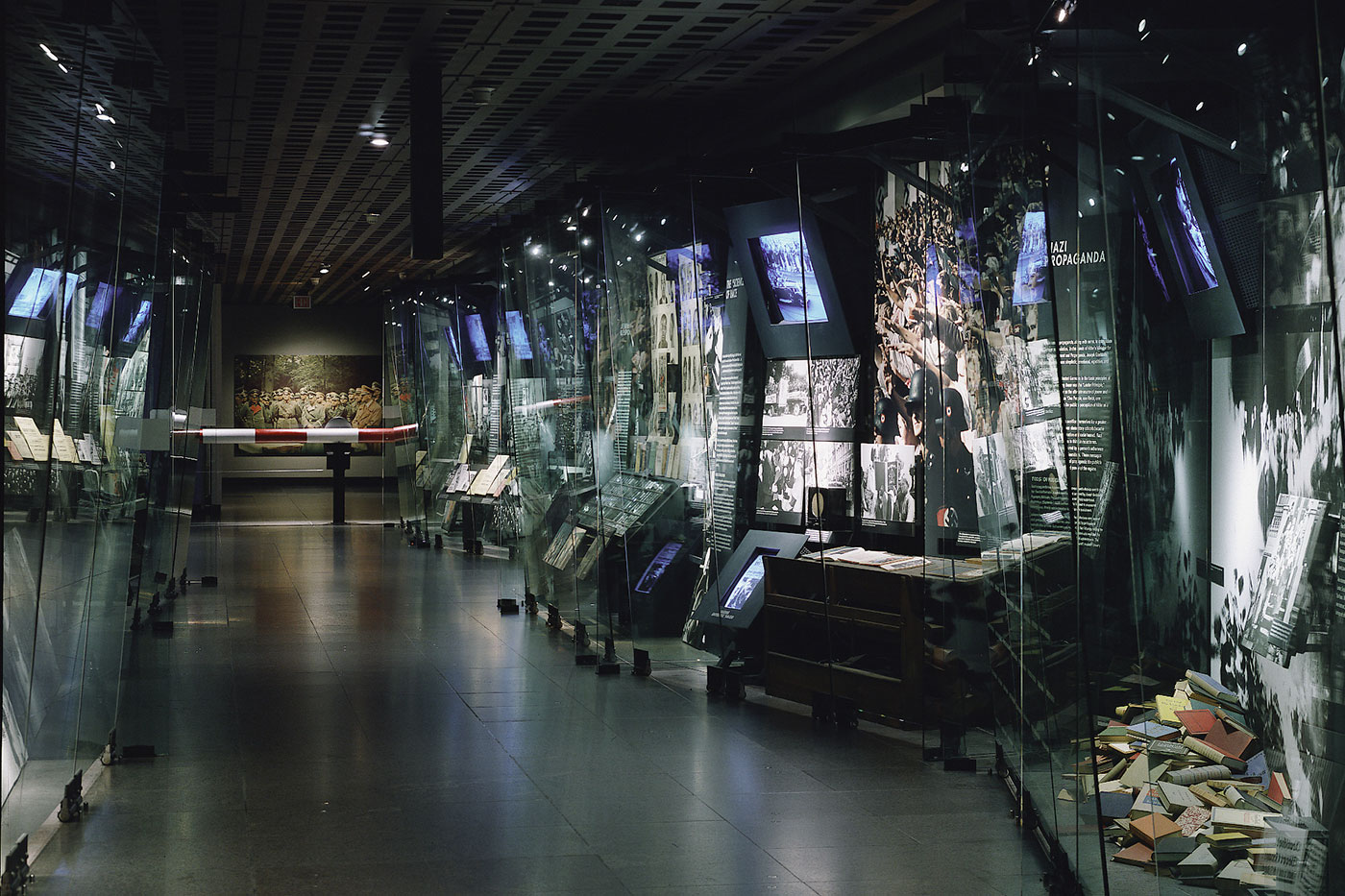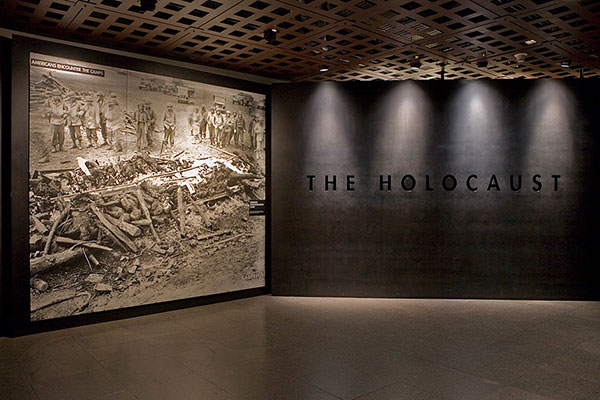The Permanent Exhibition opens with images of concentration camps taken by US Army soldiers in 1945. These scenes shocked even battle-hardened troops and informed the world of the horrors of Nazism and the enormity of the Holocaust. The initial floor of the exhibition explores how systematic mass murder could have happened. It chronicles events in Germany from the rise to power of the Nazi party in 1933 to the outbreak of World War II in September 1939.
The exhibition explores how the powerful tools of a totalitarian state—propaganda, terror, violence, and state-sponsored racism—allowed persecution to escalate. In the police state created following Adolf Hitler’s appointment as chancellor of Germany, Nazi policies transformed the country’s Jews from citizens to outcasts and mobilized the entire nation against groups deemed to be “enemies of the state.” It resulted in a refugee crisis that left hundreds of thousands of Jews and others without safe haven.
Beginning on this floor and continuing throughout the exhibition, visitors learn how Americans responded to news of Nazi persecution, the refugee problem, and the events leading up to and including the Holocaust.


